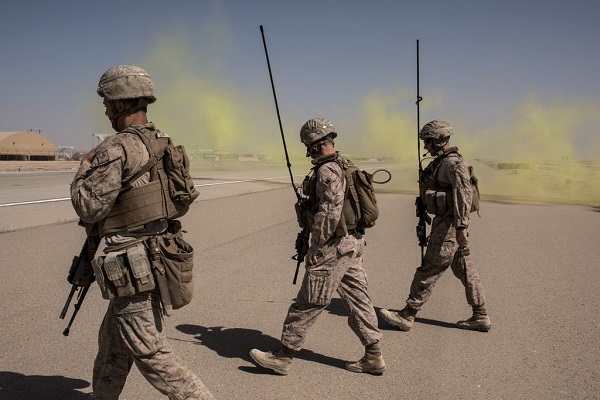US withdraws troops from Afghanistan
December 21, 2018 | Expert Insights

The Trump administration has ordered the military to start withdrawing roughly 7,000 troops from Afghanistan in the coming months.
This is the second major military withdrawal announced by the Trump administration after their decision to pull its troops from Syria.
Background
Landlocked and mountainous, Afghanistan is one of the most unstable nations in the world. Much of its economy and its infrastructure are in ruins and the nation relies heavily on foreign aid. The region is home to multiple terror groups such as ISIS, Taliban, al Qaeda and Daesh.
This chronic instability has forced many citizens to become refugees. The region is plagued by multiple terror attacks. In 2016, 4,561 people were killed by terrorists in Afghanistan. There were 1,340 terrorist attacks that year alone.
The number of terror attacks has continued to rise in recent years. Vanda Felbab-Brown, an expert in the field, testified to the Subcommittee on Terrorism, Nonproliferation, & Trade of the House Foreign Affairs Committee noting that there has been a resurgence in terrorism in the country. Nicholas Haysom, the U.N. special envoy in Afghanistan noted in March 2016 that if Afghanistan merely survived 2016, the UN would consider its mission a success.
In addition, the war continues to rage on the region. The US-led invasion, which took place in 2001, has still not ended and this is the longest war waged in American history.
Analysis
In an abrupt shift in the 17-year-old war there and a decision that stunned Afghan officials, President Trump made the decision to pull about 7,000 troops from Afghanistan. This is about half the number the United States has in the country now and it was made at the same time he decided to pull American forces out of Syria.
The announcement came hours after Jim Mattis, the Secretary of Defence, said that he would resign from his position at the end of February after disagreeing with the president over his approach to policy in the Middle East.
The whirlwind of troop withdrawals and the resignation of Mr. Mattis leave a murky picture for what is next in the United States’ longest war, and they come as Afghanistan has been troubled by spasms of violence afflicting the capital, Kabul, and other important areas. The United States has also been conducting talks with representatives of the Taliban, in what officials have described as discussions that could lead to formal talks to end the conflict.
Senior Afghan officials and Western diplomats in Kabul woke up to the shock of the news on Friday morning, and many of them braced for chaos ahead. Several Afghan officials, often in the loop on security planning and decision-making, said they had received no indication in recent days that the Americans would pull troops out. The fear that Mr. Trump might take impulsive actions, however, often loomed in the background of discussions with the United States, they said.
They saw the abrupt decision as a further sign that voices from the ground were lacking in the debate over the war and that with Mr. Mattis’s resignation, Afghanistan had lost one of the last influential voices in Washington who channelled the reality of the conflict into the White House’s deliberations.
The reduction of American forces in Afghanistan, one American official said, is an effort to make Afghan forces more reliant on their own troops and not Western support.
However, some fear the move could only imperil the Afghan troops, who have struggled in the field against the Taliban and have suffered high casualty rates, even with the current level of American support.
Cmdr. Rebecca Rebarich, a Pentagon spokeswoman, declined to comment on the plan to remove troops from Afghanistan.
The president long campaigned on bringing troops home, but in 2017, at the request of Mr. Mattis, he begrudgingly pledged an additional 4,000 troops to the Afghan campaign to try to hasten an end to the conflict.
Assessment
Our assessment is that the abrupt withdrawal is likely to imperil Afghan troops, who have in the recent past struggled in the field against the Taliban and have suffered high casualty rates, even with the current level of US support. We feel that the plan to reduce American forces in the country comes days after the United Arab Emirates hosted two days of talks between the United States and the Taliban. We understand that Taliban`s demand was the withdrawal of foreign forces from Afghanistan while the US sought assurance that Afghanistan would not become a safe haven for terrorist








Comments